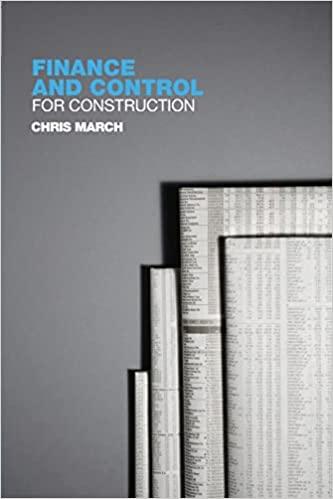Question
1.The constant-growth valuation model is based on the premise that the value of a share of common stock is what? A. the sum of the
1.The constant-growth valuation model is based on the premise that the value of a share of common stock is what?
A. the sum of the dividend and expected capital appreciation
B. determined based on an industry standard P/E multiple
C. Determined by using a measure of relative risk called correlation coefficient
D. equal to the present value of all expected future dividends
2. A firm has common stock with a market price of $25 per share and an expected dividend of $2 per share at the end of the coming year. The growth rate in dividends has been 5 percent. The required return of the firm's common equity is what?
A. 5 percent
B. 8 percent
C. 10 percent.
D. 15 percent
3. The cost of new common stock financing is higher than the cost of retained earnings due to what?
A. flotation costs and underpricing
B. floatation costs and overpricing
C. flotation costs and commision costs
D. conservatism on the part of the issuing firm
4. The coreect capital structure weights to be used in weighted average cost of capital calculations are what?
A. book value weights
B. nominal weights
C. historic weights
D. target weights
5. What is the process of evaluating and selcting long-term investments that are consistend with a firm's goal of maximzing owners wealth?
A. recapitalizing assets
B. capital budgeting
C. Ratio analysis
D. Securitization
6. A firm with limited dollars available for capital expenditures is subjuct to what?
A. capital depndency
B. capital gains
C. working capital constraints
D. capital rationing
7. The ____ is the discount rate that equates the present value of the cash inflows with the initial investment.
A. payback period
B. net present value
C. cost of capital
D. internal rate of return
8. The internal rate of return assumes a reinvestment rate equal to _______
A. the relevant cost of capital
B. the project's internal rate of return
C. the project's opportunity cost
D. the markets interest rate
9. Firms use different discount rates to evaluate the NPV of capital investments when the investments have:
A. different inital costs
B. different risk levels
C. different useful lives
D. the blessing of the firm's CFO
10. Among the advantages of the NPV technique to evaluate capital investments is:
A. it is easy to explain to those who are unsophisticated in finacial theory
B. it automatically incorporates differing levels of investment risk
C. it provides an answer that is useful in comparing investments of differing intial costs
D. none of the above
11. Among the advantages of the payback period to evaluate capital investments is:
a. it is easy to explain to those who are unsophisticated in finacial thoery
b. it automatically incorporates differing levels of investment risk
c. it provides an answer that is useful in comparing investments of differing intial costs
d. none of the above
Step by Step Solution
There are 3 Steps involved in it
Step: 1

Get Instant Access to Expert-Tailored Solutions
See step-by-step solutions with expert insights and AI powered tools for academic success
Step: 2

Step: 3

Ace Your Homework with AI
Get the answers you need in no time with our AI-driven, step-by-step assistance
Get Started


